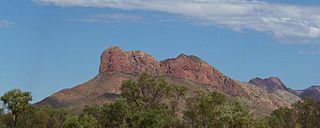Nora Andy Napaltjarri facts for kids
Quick facts for kids
Nora Andy Napaltjarri
|
|
|---|---|
| Born | c.1957 Haasts Bluff, Northern Territory, Australia
|
| Nationality | Australian |
| Known for | Painting |
Nora Andy Napaltjarri was born around 1957. She is an Indigenous Australian artist. She speaks the Warlpiri and Luritja languages. Nora comes from the Western Desert area of Australia.
Like her mother, Entalura Nangala, Nora has painted for Papunya Tula. This is a famous group of Indigenous artists. Her artwork has been shown at the Gauguin Museum in Tahiti. Her paintings are also kept by Artbank, an Australian art collection.
Contents
About Nora Andy
Nora Andy was born around 1957. Some records say 1956, others say 1957. She was born in Haasts Bluff, Northern Territory. This place is west of Alice Springs. It can be hard to know exact birth years for Indigenous Australians. They often remember dates by comparing them to other important events.
What is a Skin Name?
'Napaltjarri' is a special name. It is called a 'skin name'. These names are part of a system used by Indigenous people in central Australia. They help show family connections. Skin names define who is related to whom. They also suggest who people might marry. These names are not like surnames in European cultures. 'Nora Andy' is her personal name.
Family and Where She Lived
Nora Andy's mother is the artist Entalura Nangala. Nora has three sisters: Ada Andy Napaltjarri, Emily Andy Napaltjarri, and Charlene Andy Napaltjarri. All of them have painted for the big Indigenous art company, Papunya Tula. Nora has lived in places like Mount Allen and Mount Liebig. Both of these towns are close to Haasts Bluff. In 1994, she was living in either Alice Springs or Papunya.
Nora's Art
How Western Desert Art Began
Modern Indigenous art from the Western Desert started in 1971. Indigenous men at Papunya began painting. A teacher named Geoffrey Bardon helped them. They used acrylic paints to create designs. These designs came from body painting and ground sculptures. This new art quickly spread across central Australia. A government art program in 1983 helped it grow even more.
By the 1980s and 1990s, this art was shown all over the world. At first, only men painted. There was some resistance to women painting. But many women wanted to join in. In the 1990s, many Indigenous women started creating paintings. In communities like Kintore, Yuendumu, and Balgo, people began making art to sell and show.
Nora's Painting Career
Nora Andy started painting around 1987. She began her art journey in Alice Springs. Western Desert artists often paint specific 'dreamings'. These are stories that they have a special connection to. The 'bush onion' dreaming is a common theme in Nora's art. This story is linked to her father's country around Haasts Bluff.
Nora Andy's artwork is part of the Artbank collection. Her art was also shown in an exhibition. This exhibition was at the Gauguin Museum in Tahiti in 1988.
Collections


